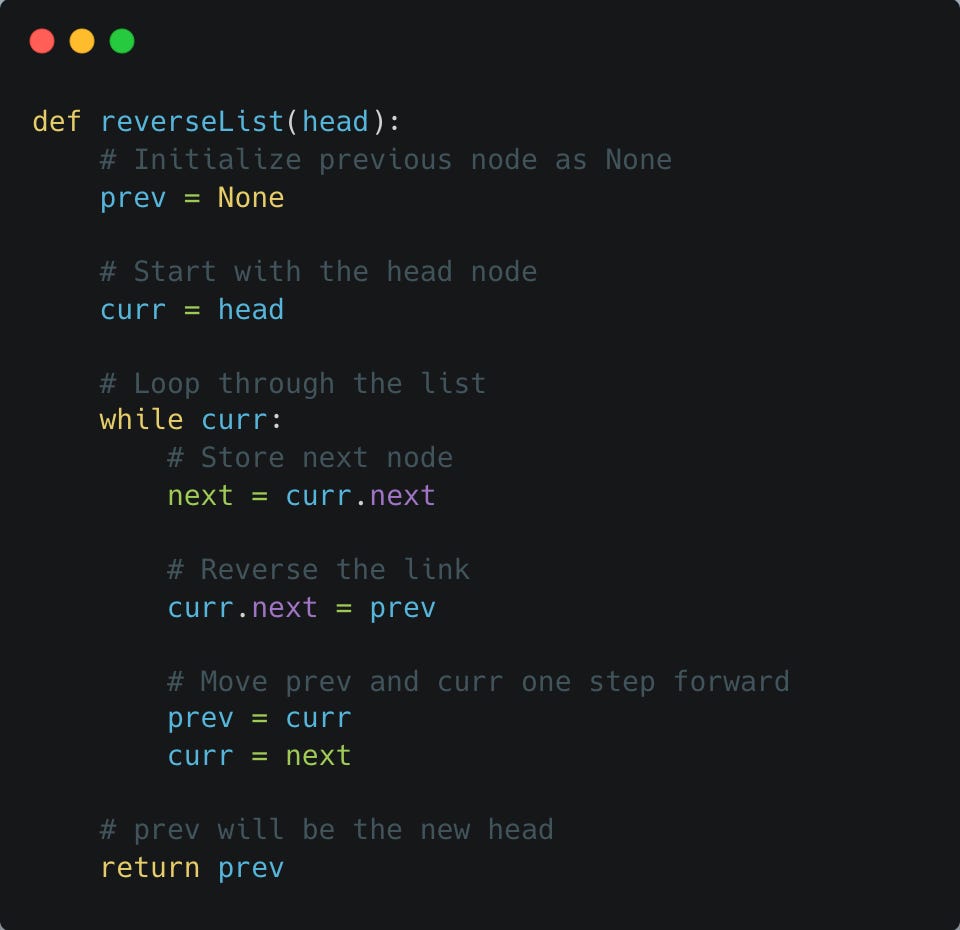Given the head of a singly linked list, reverse the list, and return the reversed list.
Input: 1 → 2 → 3 → 4 → 5
Output: 5 → 4 → 3 → 2 → 1
Input: 1 → 2
Output: 2 → 1Step 1: Clarify Requirements
Can the list be empty?
Can the list have only one node?
Should we return a new list or reverse in-place?
Step 2: Discuss Approaches
🟡 Approach 1: Brute Force
Logic:
Traverse the list and store values in an array
Reverse the array
Now, build a new linked list using that array
Time Complexity:
O(n)
We need to go through the entire list
Space Complexity:
O(n)
We are using an array
🟢 Approach 2: In-Place Reversal (Optimal)
Logic:
Use 3 pointers:
prev, curr, next
At each step:
Save curr.next as the next node
Now, set curr.next = prev
We have now reversed the current node
Now, move prev and curr one node ahead
Repeat the same steps
At the end, the entire list will be reversed
Time Complexity:
O(n)
We need to go through the entire list
Space Complexity:
O(1)
We are doing reversal in-place
Step 3: Write Code (Optimal)
Step 4: Answer Follow-Ups
What if the list is empty or has one node?
It’s already reversed.
Just return the head as is.
What if we need to reverse only part of the list?
Use a counter to stop at given bounds.
Reverse nodes only between those indices.
What if the list is doubly linked?
In this case, we can’t just reverse the next pointer.
We need to reverse both next and prev pointers.
Still possible in O(n) time and O(1) space.
🤝 Join Me on LinkedIn
40K+ strong community
Join Here: LinkedIn URL
👨💻 Need Interview Practice?
Book a 1:1 with me
Book Here: Booking URL





